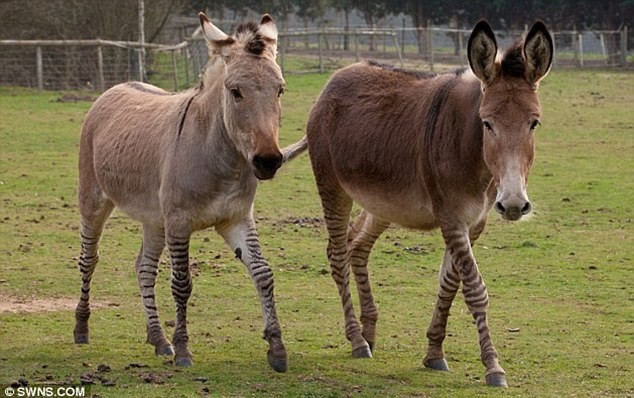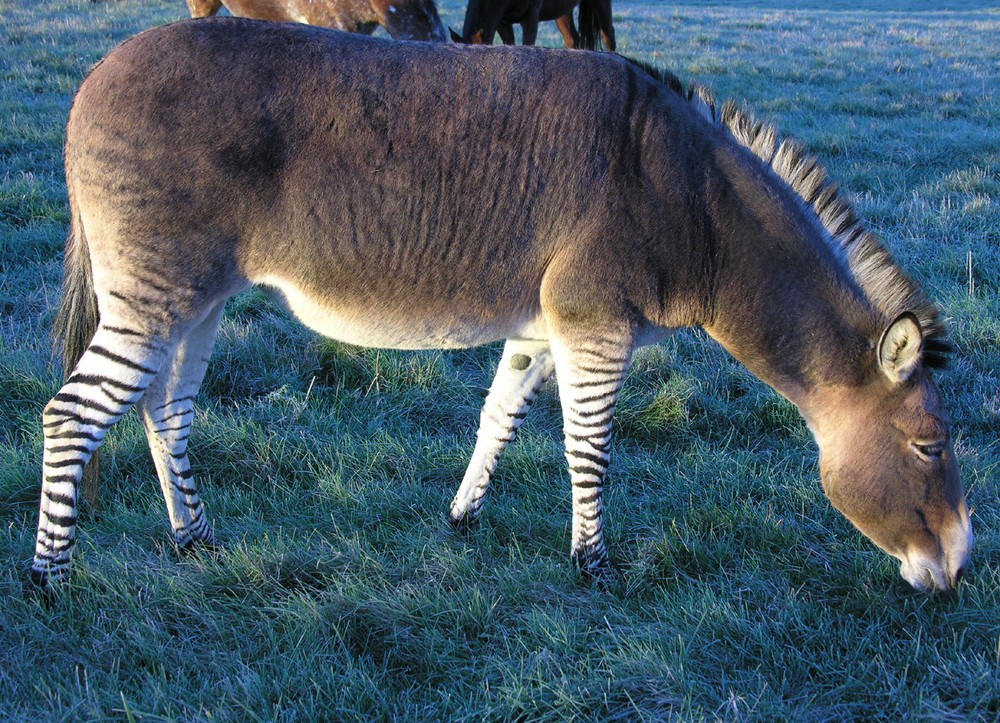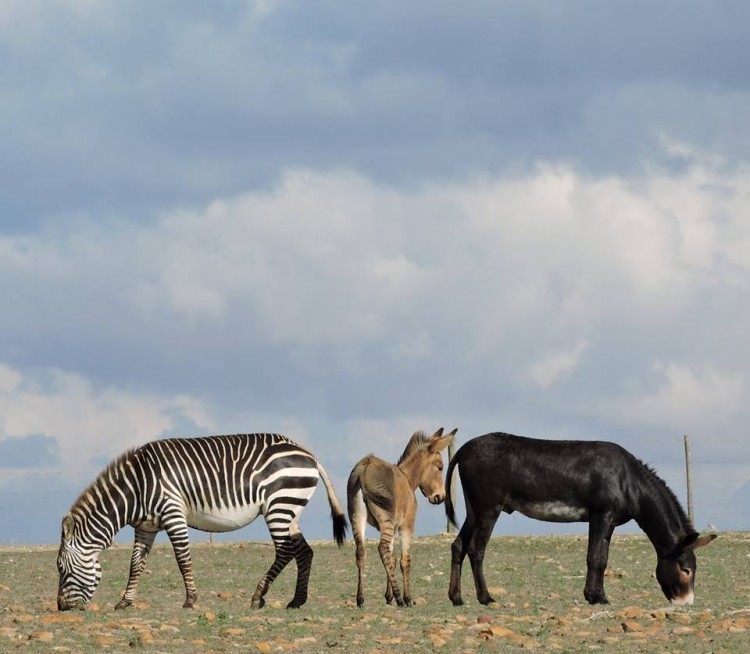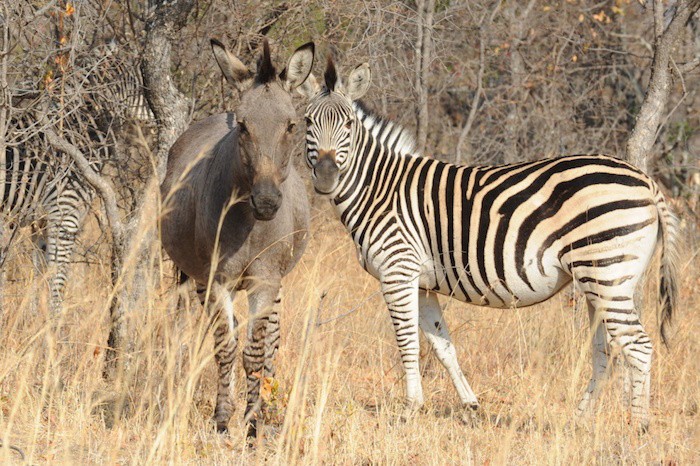Ever heard of an animal called ZONKEY? (Zenkey, Zedonk, Zebrass) Well you’re about to find out how an unusual natural occurrence has transformed two animals (Zebra and Donkey) of different species into this rare herbivorous animal, “Zonkey”
The name Zonkey was coined from the crossbreed between male Zebra and a female Donkey (of different species but of the same genetic group). Their origin can be traced to where Zebras and Donkeys co-exist and compete for food since the migration of the Zebras close to human settlements. It is also in these areas or circumstances that Zonkeys are likely to be bred naturally in the wild, as it gives the two separate species the opportunity to mate. In this article, we’ll be looking at lesser-known but fun facts about zonkeys.

Zonkey Classification and Evolution
Zebras and Donkeys are closely related with both belonging to the horse family and sharing some similar characteristics, including body size. Zonkeys take on a more definitive donkey-like appearance, with the obvious unique striped pattern on their fur from their Zebra parent.
Zonkeys can be tan, brown or grey in colour with a lighter underside, and it is on the lighter parts of their body; like their legs and belly where the Zonkeys’ darker stripes are most prominent. A black mane which extends along the ridge of their back to the tip of their black tail, with large head and ears, makes them look much more like a donkey than a Zebra.
See Also: 10 South African Smallest and Largest Animals
The Zonkey is a sterile creature meaning that it cannot produce offspring of its own; this could simply mean that their existence depends wholly on the continuous mating and cross-breeding of Donkeys and Zebras.
A Zonkey’s lifespan ranges from 15-25 years and a weight range of 227kg-318kg. Unlike the Liger though, it is possible for Zonkeys to live in the wild as Zebras and Donkeys are naturally found in close proximity to one another in parts of Africa. Although they are very rare, cases of wild Zonkeys have been reported but the majority of them today are found in zoos around the world and are bred and used for tourist attractions.
Behaviour and Lifestyle
Being an offspring of two different parents, from separate habitat; domestic donkey and wild Zebra, the behaviour of Zonkeys can easily be described as both wild and domestic (aggressive and yielding). Their fair flare of aggression can be ascribed to one of the parents, Zebra. One of the Zonkey’s most favourable characteristics is their sheer power which is made up of the stamina of the Donkey mixed with the speed and strength of the Zebra, which has led to them being used as work animals mainly to pull heavy loads. They have a diurnal lifestyle
Diet and Prey
Like Donkeys, Zebras, Horses and their other relatives, Zonkeys are herbivorous animals meaning that they survive on a diet that is solely comprised of plant matter. The majority of their food is made up of grasses and herbs that grow on the ground and like all equines, the Zonkey has flat, broad set of teeth that is a perfect tool for grinding down the fibrous grass. Along with grazing, Zonkeys also like to browse for other types of food including fruits and berries which are found growing more common in less arid areas. Due to the fact that Zonkeys are naturally found in the African wilderness, there is always competition for both food and water from other animals inhabiting the same area, they are always on the move in search of greener pastures.
Zonkeys Predators and Threats
Unfortunately, Zonkeys are not located on top of the food chain despite their large size, and just as the cycle of life goes from grass to grace and vice versa, they eat and get eaten as well. If Zebra and Donkeys – Zonkeys’ parents could not escape being hunted by Lions, Hyenas, Cheetahs and Leopards – Do you think poor Zonkey stands a chance? But they do have a strong stamina to escape or even fight to resist their predators’ threats. Zebras particularly are known to protect their wounded individual from further attacks from predators.
Relationship with Humans
Like their ancestors (Donkeys) that have been domestic animals for over 5,000 years, Zonkeys are also bred by Humans to pull heavy loads. They were thought to have appeared in zoos in the 19th century. The Zonkey first became really famous when one was accidentally sired in Colchester Zoo in the 1970s, and since then have been exhibited as a popular tourist attraction. Besides being bred in zoos around the world, Zonkeys are also bred for riding and as work animals involved in transport and pulling heavy loads due to their strength and stamina.
In the wild parts of Africa however, Zebras have come under particular threat from people due to either hunting and encroaching human settlements or land clearance for agriculture.
Conservation Status and Life Today
Zonkeys are not listed by the International Union for Conservation of Nature (IUCN) due to the fact that they are cross-bred animal and as a result cannot continue as a population. While the three Zebra species are all listed with the Plains Zebra as Least Concern, the Mountain Zebra as Vulnerable and the Grevy’s Zebra as Endangered, this means that the chances of Zonkeys occurring in the wild are becoming slimmer, with the majority of them today found in zoos and used as work animals.
See Also: 10 Most Dangerous Animals You Should Avoid In Africa
Zonkeys have been mentioned by naturalists for centuries including Charles Robert Darwin who mentioned the possibility of a fertile female Zonkey that was being exhibited at the London Zoo. The Zonkey is thought to be a popular work animal as they have an apparent resistance to certain pests and diseases, a characteristic that is notable in their Zebra father.


